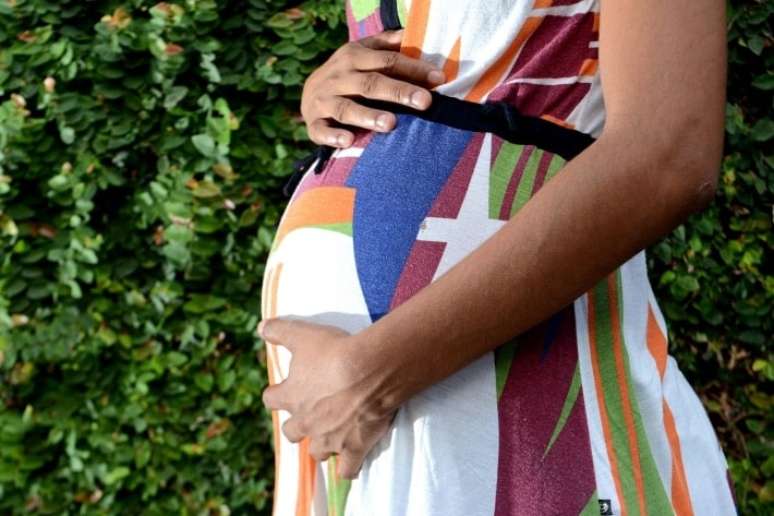For the agency, fighting the persistent crisis of the mortality of women and mothers in pregnancy is a global equity problem
Bleeding and hypertensive disorders, such as preeclampsiaare the main causes of maternal death in the world, according to a study by World Health Organization (WHO) Published in the scientific journal The Lancet Global Health This Friday, 7, the eve of International Women’s Day.
The paintings were respectively responsible for about 80,000 and 50,000 deaths in 2020, revealing that many women still do not have access to effective treatments during and after the period of gestation.
“Understanding why women and mothers in pregnancy are dying is essential to fight Persistent crisis of maternal mortality In the world and make sure you have the best possibilities to survive birth “, says Pascale Altey, director of the sexual and reproductive department of the WHO sexual health and the United Nations Special Human Reproduction Program in a press release.
“This is also a global equity problem: all women need high quality health care, based on tests before, during and after childbirth, as well as actions to prevent and treat the underlying diseases that put their health at risk,” he continues.
It is estimated that 287,000 maternal deaths occurred by 2020, last year with published estimates. The number is equivalent to one event every two minutes. The new study shows that hemorrhage was responsible for 27% of these deaths, while preeclampsia and other hypertensive disorders contributed to about 16%.
Preeclampsia
THE Preeclampsia is a serious condition characterized by high blood pressure and can lead to Race (race)hemorrhage, convulsions and failure of the organs if not treated correctly.
The cause of the picture is not yet completely understood, but researchers know that there is a relationship with changes in the formation of the blood vessels of the placenta. They become closer, reduce blood flow and increase blood pressure.
Generally, preeclampsia is established from the 20th week of gestation and occurs especially in the 3rd quarter. The pressure greater than 140 mmhg for 90 mmhg (14 per 9) is the main indicator, but not the only one. A 25% increase in pre-blocco pressure levels is also considered a signal.
Other causes of death
The study, the first global update on the subject since 2015, lists other frequent frames in the statistics on death. I am:
- Sepsis and infections;
- Pulmonary embolism;
- Complications of abortion spontaneous and induced – including ectopic pregnancy and unsafe abortions;
- Complications or anesthetic injuries occurred during childbirth.
The survey also shows that other health conditions, including HIV/AIDS, malariaanemia e diabetesThey are responsible for almost 23% of the deaths relating to the gestational period. These diseases are often treated only when serious complications arise, which increases risks.
The study was conducted by national data sent to who and pairs magazines. Some information, however, are limited. This is the case, for example, maternal suicide: only 12 countries make the record.
Furthermore, most countries do not report late deaths (those who occur up to a year after childbirth). Many women also face difficulty in accessing follow -up -up, including mental health support
Access to services must improve
According to the survey, most maternal deaths occur during or immediately after childbirth. About a third of women – especially in low -income countries – does not even suffer a doctor in the first days after birth. Therefore, the authors strengthen the need to strengthen access to maternal assistance services, such as those that offer prenatal care, which identify early risks and prevent complications.
“It is often not only one, but several interconnected factors that lead to maternal death: preeclampsia, for example, can significantly increase the probability of bleeding and other complications, even months after childbirth”, explains Jenny Cresswell, who scientist and also the author of the study in the declaration.
“A more holistic approach to maternal health has already been effective to guarantee a healthy pregnancy and birth, as well as a good quality of life after birth. Health systems must support women in all stages of life,” he adds.
In search of deaths to avoid, which launched a global plan to combat postpartum bleeding in 2024. In the same year, the countries of the 194 world health assembly approved a resolution to improve the quality of care in all stages of pregnancy.
Now, in 2025, World Health Day will focus on maternal and neonatal health. The aim is to charge measures to expand access to essential care, especially in poor countries and in the regions in crisis, where there are more deaths. The campaign will also allow to notify the importance of postpartum monitoring and women’s health support.
Source: Terra
Ben Stock is a lifestyle journalist and author at Gossipify. He writes about topics such as health, wellness, travel, food and home decor. He provides practical advice and inspiration to improve well-being, keeps readers up to date with latest lifestyle news and trends, known for his engaging writing style, in-depth analysis and unique perspectives.









